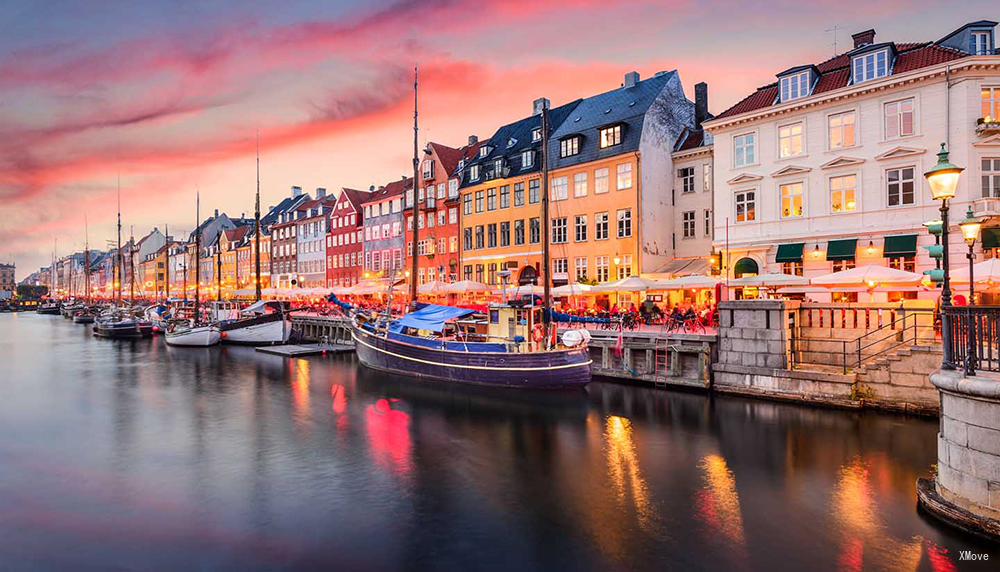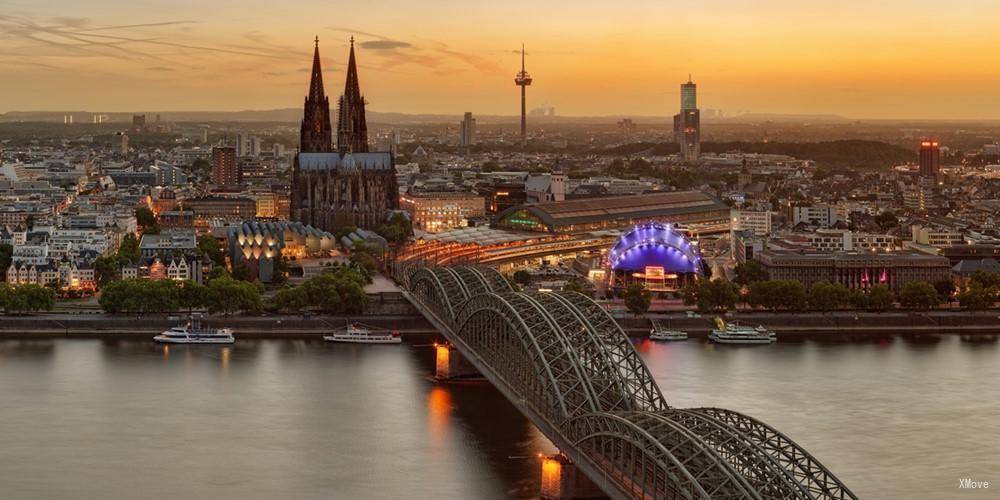Copenhagen to K Oe Ln: Trains, Buses, Fares, Today's Connections, Routes, Duration, Types of Trains, Station Guides, Tips, Journey
Denmark Train Tickets
Scan QR code, download G2Rail App to see Copenhagen's more live update, station guide, plan and photos



Train schedule Copenhagen(Koebenhavn) to K Oe Ln(Köln)
Popular train routes departing from Copenhagen(Koebenhavn)
* Maastricht
* Stockholm Arlanda Airport
* Halmstad Central(Halmstad C)
* Höganäs
* Rendsburg
* Skillinge Busstation
* Augsburg Central(Augsburg Hbf)
Popular train routes arriving in Copenhagen(Koebenhavn)
Popular train routes departing from K Oe Ln(Köln)
* Muenchen Flughafen Terminal(München Flughafen Terminal)
* Trier Central(Trier Hbf)
* Berlin (Main Underground)(Berlin Hbf (Tief))
* Dresden Central(Dresden Hbf)
* Budapest
* Ettlingen Stadt
* Koblenz Central(Koblenz Hbf)
Popular train routes arriving in K Oe Ln(Köln)
* ルツェルン(Luzern)
* カンタベリー(Canterbury West)
* ハンブルク中央駅(Hamburg Hbf)
* ウェスト・ドレイトン(West Drayton)
* フランクフルト・アム中央駅(Frankfurt(Main)Hbf)
* フランクフルト・アム中央駅(Frankfurt(Main)Hbf)
* ディリンゲン(ザール)(Dillingen(Saar))

Copenhagen (Danish: København [kʰøpm̩ˈhaʊ̯ˀn] ) is the capital and most populous city of Denmark. As of July 2018, the city has a population of 777,218 (616,098 in Copenhagen Municipality, 103,914 in Frederiksberg Municipality, 43,005 in Tårnby Municipality, and 14,201 in Dragør Municipality). It forms the core of the wider urban area of Copenhagen (population 1,320,629) and the Copenhagen metropolitan area (population 2,057,737). Copenhagen is situated on the eastern coast of the island of Zealand; another small portion of the city is located on Amager, and it is separated from Malmö, Sweden, by the strait of Øresund. The Øresund Bridge connects the two cities by rail and road. Originally a Viking fishing village established in the 10th century in the vicinity of what is now Gammel Strand, Copenhagen became the capital of Denmark in the early 15th century. Beginning in the 17th century it consolidated its position as a regional centre of power with its institutions, defences and armed forces. After a plague outbreak and fire in the 18th century, the city underwent a period of redevelopment. This included construction of the prestigious district of Frederiksstaden and founding of such cultural institutions as the Royal Theatre and the Royal Academy of Fine Arts. After further disasters in the early 19th century when Horatio Nelson attacked the Dano-Norwegian fleet and bombarded the city, rebuilding during the Danish Golden Age brought a Neoclassical look to Copenhagen's architecture. Later, following the Second World War, the Finger Plan fostered the development of housing and businesses along the five urban railway routes stretching out from the city centre. Since the turn of the 21st century, Copenhagen has seen strong urban and cultural development, facilitated by investment in its institutions and infrastructure. The city is the cultural, economic and governmental centre of Denmark; it is one of the major financial centres of Northern Europe with the Copenhagen Stock Exchange. Copenhagen's economy has seen rapid developments in the service sector, especially through initiatives in information technology, pharmaceuticals and clean technology. Since the completion of the Øresund Bridge, Copenhagen has become increasingly integrated with the Swedish province of Scania and its largest city, Malmö, forming the Øresund Region. With a number of bridges connecting the various districts, the cityscape is characterised by parks, promenades and waterfronts. Copenhagen's landmarks such as Tivoli Gardens, The Little Mermaid statue, the Amalienborg and Christiansborg palaces, Rosenborg Castle Gardens, Frederik's Church, and many museums, restaurants and nightclubs are significant tourist attractions. The largest lake of Denmark, Arresø, lies around 27 miles (43 kilometers) northwest of the City Hall Square. Copenhagen is home to the University of Copenhagen, the Technical University of Denmark, Copenhagen Business School and the IT University of Copenhagen. The University of Copenhagen, founded in 1479, is the oldest university in Denmark. Copenhagen is home to the FC København and Brøndby football clubs. The annual Copenhagen Marathon was established in 1980. Copenhagen is one of the most bicycle-friendly cities in the world. The Copenhagen Metro launched in 2002 serves central Copenhagen. The Copenhagen Metro is scheduled to expand radically with the opening of the City-ring line during fall 2019, the new line will connect all inner boroughs of the city by metro, including The Central Station, and will open up 17 new stations for Copenhageners. The new metro line is a part of the city's strategy to transform mobility towards sustainable modes of transport such as public transport and cycling as opposed to automobility. Additionally the Copenhagen S-train, the Lokaltog (private railway) and the Coast Line network serves and connects central Copenhagen to outlying boroughs. The Copenhagen-Ringsted Line will relieve traffic congestion in the corridor between Roskilde and Copenhagen. Serving roughly two million passengers a month, Copenhagen Airport, Kastrup, is the busiest airport in the Nordic countries.
Copenhagen - Guide, Attractions, Tours, Sightseeings | Train from/to Copenhagen | Popular RoutesCologne (English: kə-LOHN; German: Köln [kœln] ; Ripuarian: Kölle [ˈkœlə] ) is the largest city of Germany's most populous federal state of North Rhine-Westphalia and the fourth most populous city in Germany after Berlin, Hamburg, and Munich. With slightly over a million inhabitants (1.08 million) within its city boundaries, Cologne is the largest city on the Rhine and also the most populous city both of the Rhine-Ruhr Metropolitan Region, which is Germany's largest and one of Europe's major metropolitan areas, and of the Rhineland. Centered on the left bank of the Rhine, Cologne is about 45 kilometres (28 mi) southeast of North Rhine-Westphalia's capital of Düsseldorf and 25 kilometres (16 mi) northwest of Bonn. It is the largest city in the Central Franconian and Ripuarian dialect areas. The city's Cologne Cathedral (Kölner Dom) is the seat of the Catholic Archbishop of Cologne. There are many institutions of higher education in the city, most notably the University of Cologne (Universität zu Köln), one of Europe's oldest and largest universities, the Technical University of Cologne (Technische Hochschule Köln), Germany's largest university of applied sciences, and the German Sport University Cologne (Deutsche Sporthochschule Köln), Germany's only sport university. Cologne Bonn Airport (Flughafen Köln/Bonn) is Germany's seventh-largest airport and lies in the southeast of the city. The main airport for the Rhine-Ruhr region is Düsseldorf Airport. Cologne was founded and established in Ubii territory in the 1st century AD as the Roman Colonia Claudia Ara Agrippinensium, the first word of which is the origin of its name. An alternative Latin name of the settlement is Augusta Ubiorum, after the Ubii. "Cologne", the French version of the city's name, has become standard in English as well. Cologne functioned as the capital of the Roman province of Germania Inferior and as the headquarters of the Roman military in the region until occupied by the Franks in 462. During the Middle Ages the city flourished as being located on one of the most important major trade routes between east and west in Europe. Cologne was one of the leading members of the Hanseatic League and one of the largest cities north of the Alps in medieval and Renaissance times. Prior to World War II the city had undergone several occupations by the French and also by the British (1918–1926). Cologne was one of the most heavily bombed cities in Germany during World War II, with the Royal Air Force (RAF) dropping 34,711 long tons (35,268 tonnes) of bombs on the city. The bombing reduced the population by 95%, mainly due to evacuation, and destroyed almost the entire city. With the intention of restoring as many historic buildings as possible, the successful postwar rebuilding has resulted in a very mixed and unique cityscape. Cologne is a major cultural centre for the Rhineland; it hosts more than 30 museums and hundreds of galleries. Exhibitions range from local ancient Roman archeological sites to contemporary graphics and sculpture. The Cologne Trade Fair hosts a number of trade shows such as Art Cologne, imm Cologne, Gamescom, and the Photokina.
Cologne - Guide, Attractions, Tours, Sightseeings | Train from/to Cologne | Popular Routes
Denmark Train Tickets
Scan QR code, download G2Rail App to see Copenhagen's more live update, station guide, plan and photos



Hot Journeys
* Florence -> Rome(Roma)
* Milan -> Como
* London(London) -> Brussels(Bruxelles)
* Lucerne(Luzern) -> Interlaken
* Avignon -> Paris
* Nice -> Milan
* Cologne(Köln) -> Frankfurt
* Venice(Venezia) -> Rome(Roma)
* Florence -> Pisa
* Florence -> Venice(Venezia)
* Lucerne(Luzern) -> Arth
* Beijing(北京) -> Shanghai(上海)
* Pisa -> Florence
* Dusseldorf(Düsseldorf) -> Frankfurt
* Paris -> Frankfurt
* Interlaken -> Lucerne(Luzern)
* Stuttgart -> Frankfurt Airport(Frankfurt Flughafen)
* Rome(Roma) -> Venice(Venezia)
* Milan -> Rome(Roma)
* Oxford -> London(London)
* Berlin(Berlin) -> Munich(Müchen)
* Seoul(서울) -> Andong Si(안동시)
* Barcelona -> Madrid(Madrid)
* Frankfurt -> Cologne(Köln)
* Frankfurt Airport(Frankfurt Flughafen) -> Stuttgart
* Rome(Roma) -> Florence
* Bratislava(Bratislava) -> Warsaw(Warszawa)

